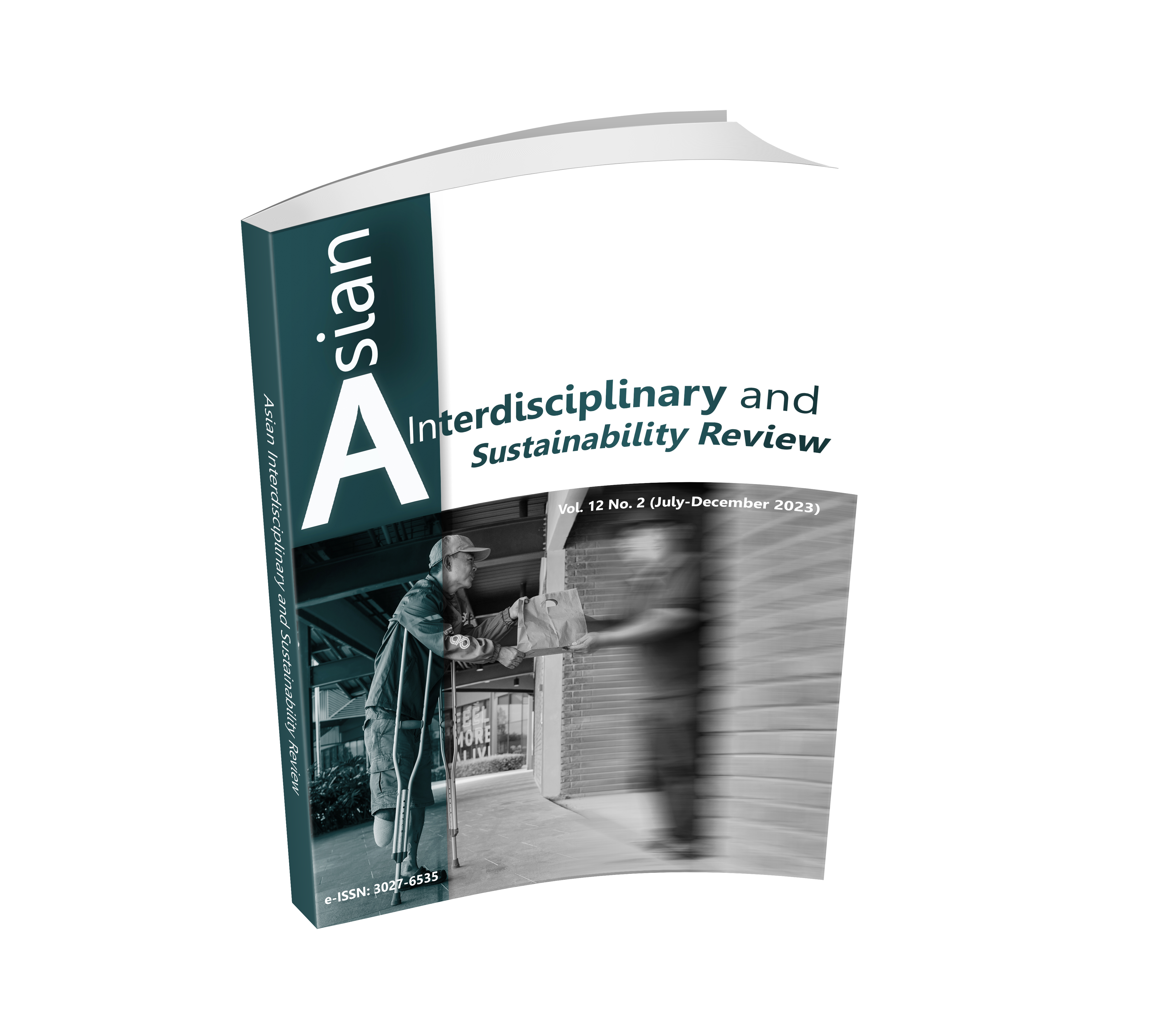PRODUCTION OF VIDEO TO PROMOTE ECOTOURISM: A CASE OF SEA OF MIST AT GUNUNG SILIPAT, YALA, THAILAND
DOI:
https://doi.org/10.14456/aisr.2023.4Keywords:
Tourism Promotion, Video, Ecotourism, Betong, ThailandAbstract
Tourism is an important industry for local development. There is a business chain involved, namely the travel industry which encompasses international travel. Gunung Silipat is particularly appealing to nature enthusiasts. The condition of Betong, Yala, is recognized for its high potential in the tourism sector, especially in the Lower South of Thailand, despite Betong experiencing fewer incidents compared to other areas. However, ongoing unrest from neighboring regions continues to impact the confidence of tourists, especially those from other provinces. This research aims to 1) study the tourism behavior of tourists towards Betong, 2) create a video to promote tourism in the Sea of Mist at Gunung Silipat, and 3) assess the satisfaction levels of viewers of the promotional video. The research showed as follows. 1) The majority of the sample expressed a preference for traveling with friends. They enjoy leisure-seeking activities, prefer trips lasting 2 days and 1 night, and typically consume travel-related media through Facebook. 2) The quality of the promotional video for the Sea of Mist at Gunung Silipat was rated as good quality. 3) Audience satisfaction with the promotional video for the Sea of Mist at Gunung Silipat was rated as strongly satisfied.
Downloads
References
Cohen, S., Prayag, G., & Moital, M. (2014). Consumer behaviour in tourism: Concepts, influences and opportunities. Current Issues in Tourism, 17(10), 872-909.
Collins, D., & Tisdell, C. (2002). Gender and Differences in Travel Life Cycles. Journal of Travel Research, 41(2), 133-143.
Ekakul, T. (2000). Research Methods in Behavioral and Social Sciences. 2nd ed. Ubon Ratchathani: Science Offset Printing.
Juvan, E., Omerzel, D., & Maravic, M. (2017). Tourist Behaviour: An Overview of Models to Date. A paper presented at the Joint International Conference 2017, Monastier di Treviso, Italy.
Kaewngam, K., & Jongwilaikasaem, W. (2019). Betong: Strategies of the Tourism Communication Under the Violence Crisis in the Three Southern Border Provinces. Journal of Communication Arts, 37(3), 40-50.
Kara, N., & Mkwizu, K. (2020). Demographic factors and travel motivation among leisure tourists in Tanzania. International Hospitality Review, 34(1), 81-103.
Kay, A. (2006). Promoting Tourism Through Popular Music. Tourism Culture & Communication, 6(3), 209-213.
Khattiya, S. (2012). Principles of Radio and Television Broadcasting. Bangkok: Prayoonwong Printing.
Leiper, N. (2002). Tourism Management. Wong Chuk Hang: Hospitality Press.
Meaney, S., & Robb, J. (2006). Shooting Ireland: The American tourism market and promotional film. Irish Geography, 39(2), 129-142.
Mercille, J. (2005). Media effects on image: The Case of Tibet. Annals of Tourism Research, 32(4), 1039-1055.
Moscardo, G., Morrison, A., Pearce, P., Lang, C., & O’Leary, J. (1996). Understanding vacation destination choice through travel motivation and activities. Journal of Vacation Marketing, 2(2), 109-122.
Mulkunee, S., Jaiuea, M., Suksathit, K., Manomaikul, P., & Taraka, P. (2022). Development Guidelines for Tourism Destination to Satisfy Lifestyle and Behavior of Generation Y. Journal of Interdisciplinary Research: Graduate Studies, 11(2), 339-349.
Ngamkham, C. (2023). Attitudes and Behaviors of Tourists Towards Gastronomy Tourism in Chiang Mai, Thailand. Procedia of Multidisciplinary Research, 1(2), 10.
Pan, S. (2011). The Role of TV Commercial Visuals in Forming Memorable and Impressive Destination Images. Journal of Travel Research, 50(2), 171-185.
Perreault, W., Dorden, D., & Dorden, W. (1979). A Psychological Classification of Vacation Life-styles. Journal of Leisure Research, 9, 208-224.
Pharasakul, L. (2016). Tourist Behavior (3rd ed.) Bangkok: Chulalongkorn University Press.
Prapasawasdi, U., Wuttisittikulkij, L., Borompichaichartkul., C., Changkaew, L., & Saadi, M. (2018). Cultural Tourism Behaviors: Enhancing the Influence of Tourists’ Perceptions on Local Thai Food and Culture. The Open Psychology Journal, 11, 184-197.
Pukkanasut, P. (2006). The relationship between self-esteem, personality, and satisfaction in the lives of people living in Khlong Luang Housing Community, Pathum Thani Province. Master of Psychology Thesis, Kasetsart University.
Sermthong, A. (2010). Woman and Media in Thailand: The State of Knowledge [1993-2009]. Bangkok: Sripatum University.
Sirirak, P. (2008). Customer Satisfaction of Chattaya Clinic Thai Massage & Spa at Hua-Hin. Master of Education Thesis, Srinakharinwirot University.
Srisaard, B. (2000). Population reference when using the value-added scale tool: Sample group. Journal of Educational Evaluation, Mahasarakham University, 3, 23-24.
Thongdaeng, T., & Cheyjunya, P. (2019). Lifestyle, Media Exposure of Vlog, Credibilityand Tourism Decision Making of Vlog Audience. Journal of Communication and Innovation NIDA, 6(2), 1-20.
Tuancha-em, T. (2009). Research Variables and Questionnaire Construction Manual. Bangkok: Research Development Institute of Thailand.
Um, S., & Crompton, J. (1990). Attitude determinants in tourism destination choice. Annals of Tourism Research, 17(3), 432-448.
Vikian, P. (2017). Basic Knowledge about ICT Learning Videos. Retrieved from. https://krupiyadanai.wordpress.com/computer4.
Wattanasaengprasert, P. (2018). A Proposed Management for Tourism Logistics of Secondary City Case Study in Nakhon Nayok Province. Master of Science Thesis, Sripatum University.
Weaver, D., & Oppermann, M. (2000). Tourism Management. Queensland: John Wiley & Sons.
Westvlaams, E. (1986). Toerishische gedragingen en Attitudes van de Belgen in 1985, Reeks Vakontieanderzaeken, Brussels. Journal of Travel Research, 27(2), 19-32.

Downloads
Published
How to Cite
Issue
Section
License
Copyright (c) 2023 Authors

This work is licensed under a Creative Commons Attribution-NonCommercial-NoDerivatives 4.0 International License.











.png)


